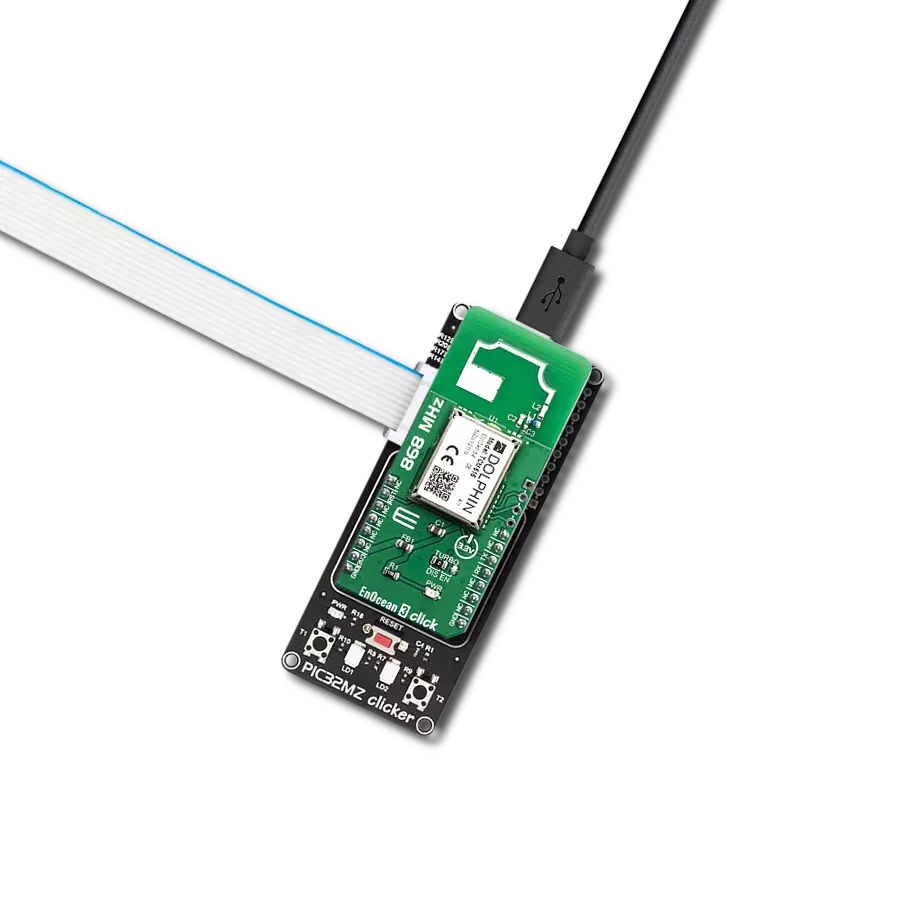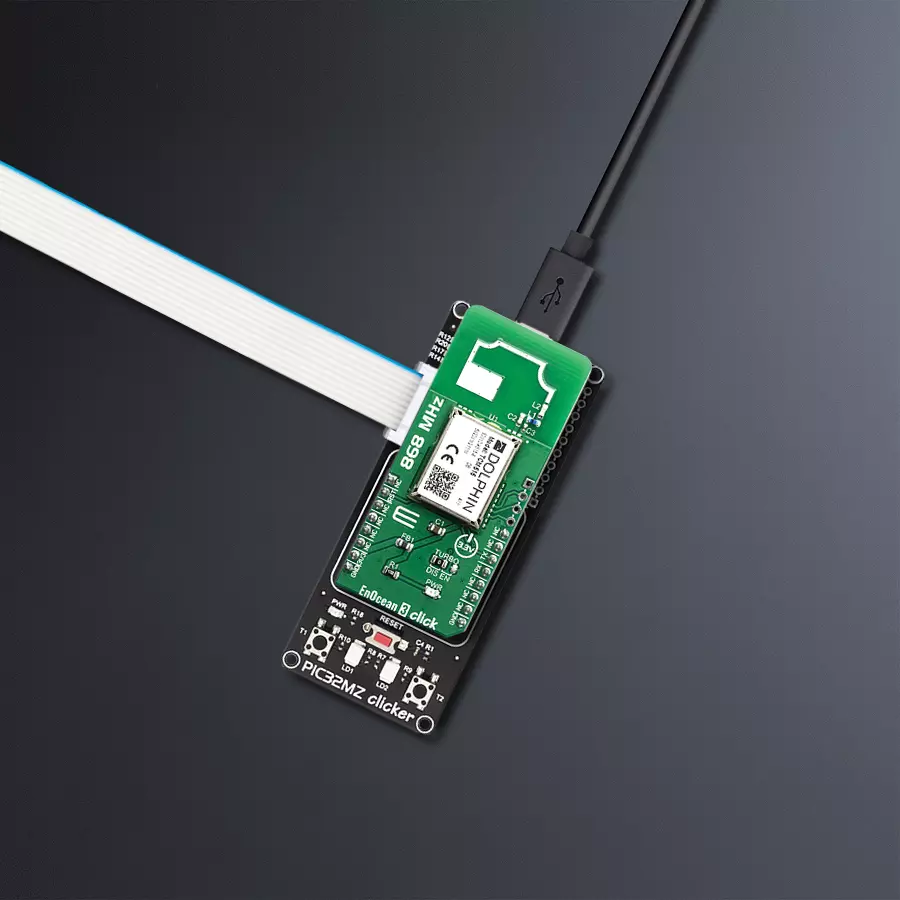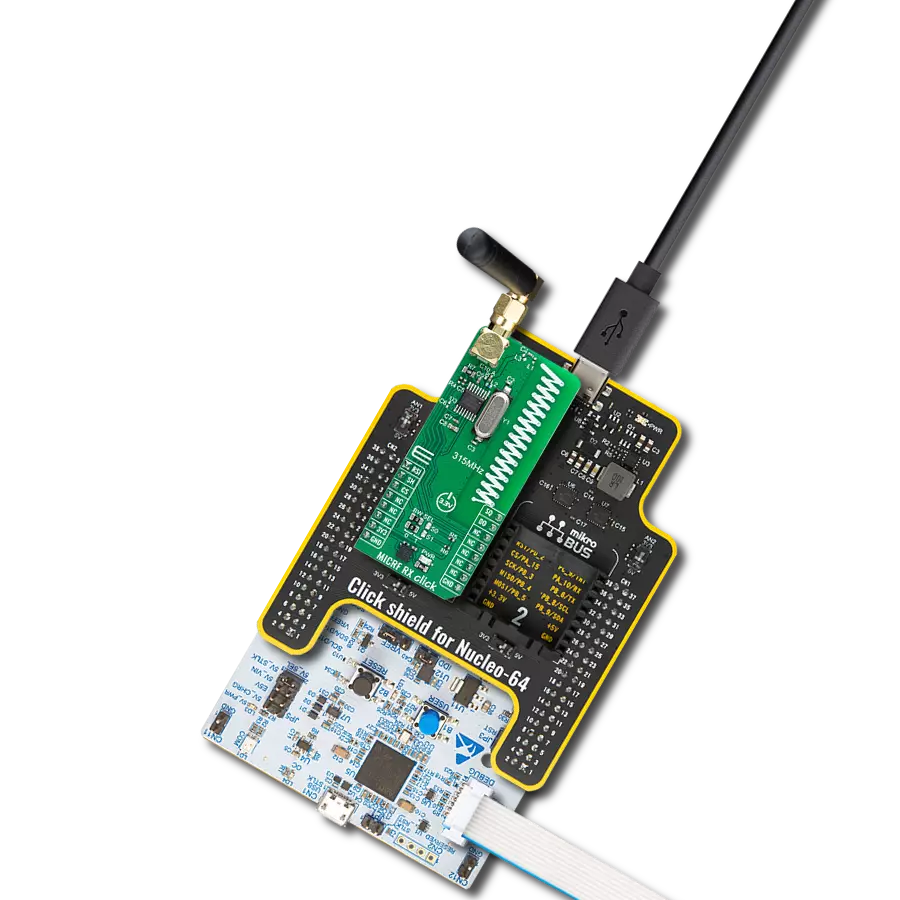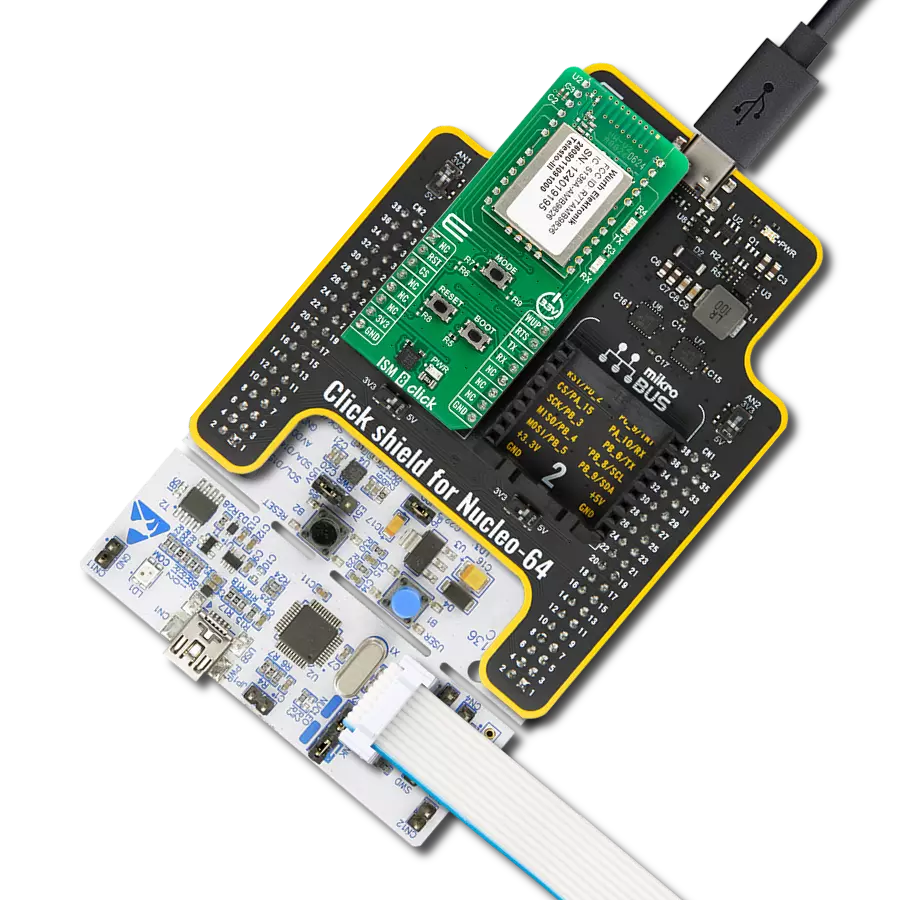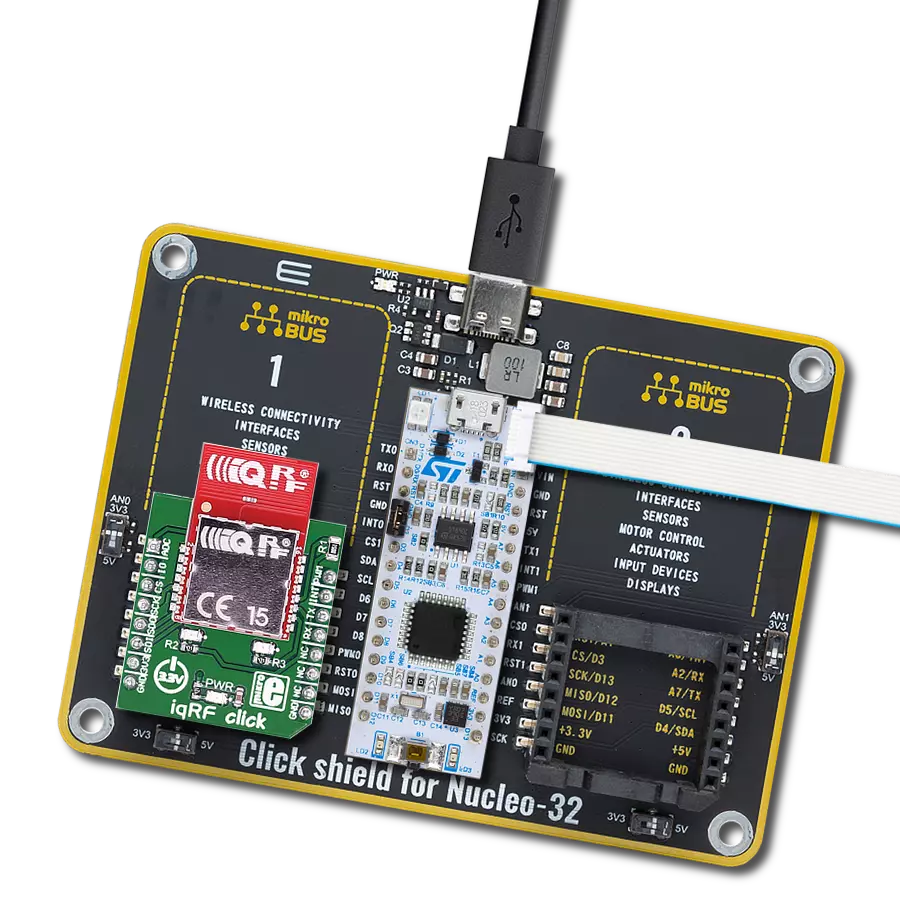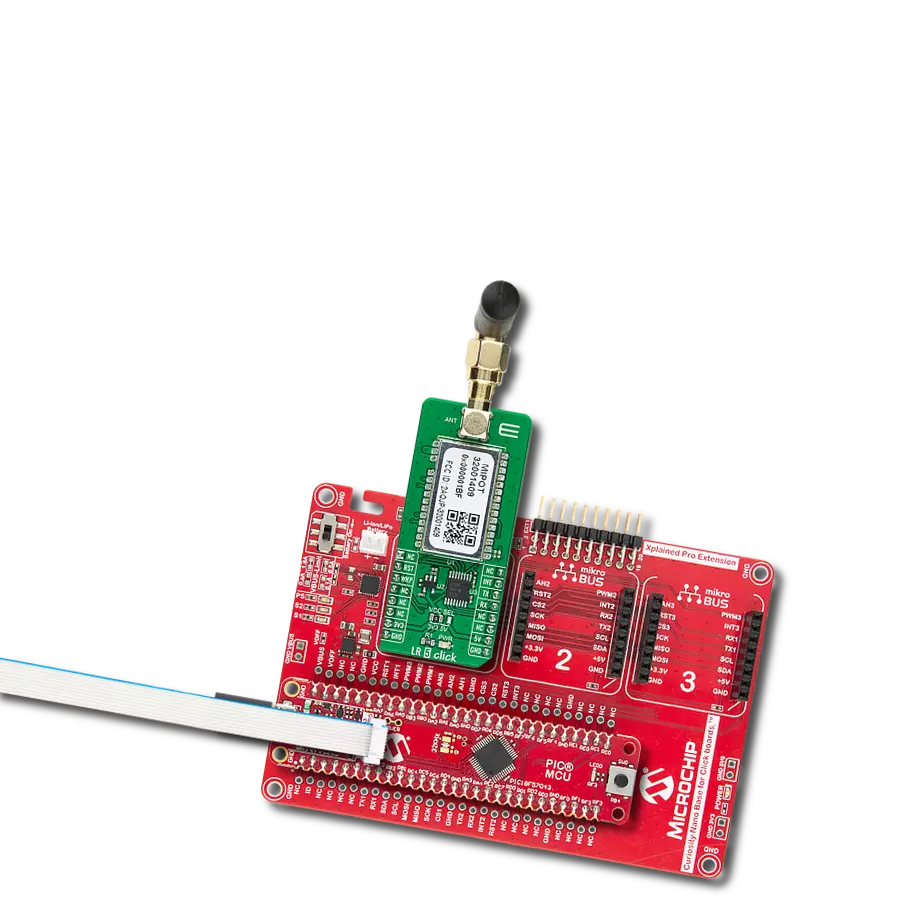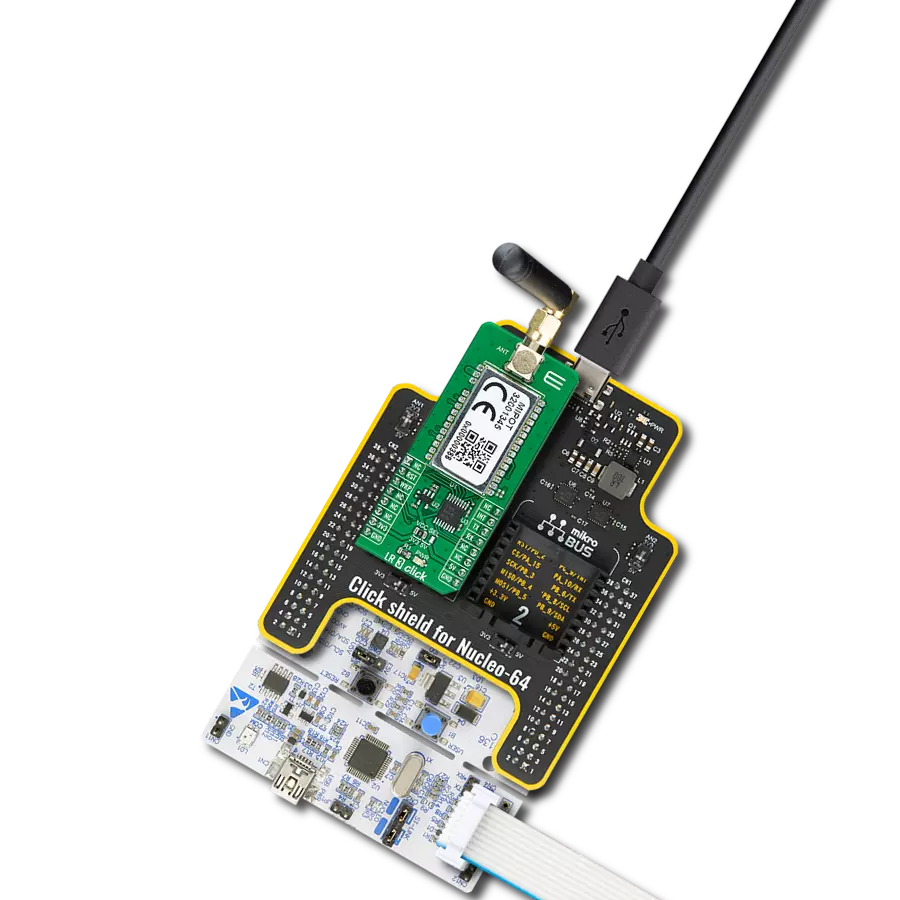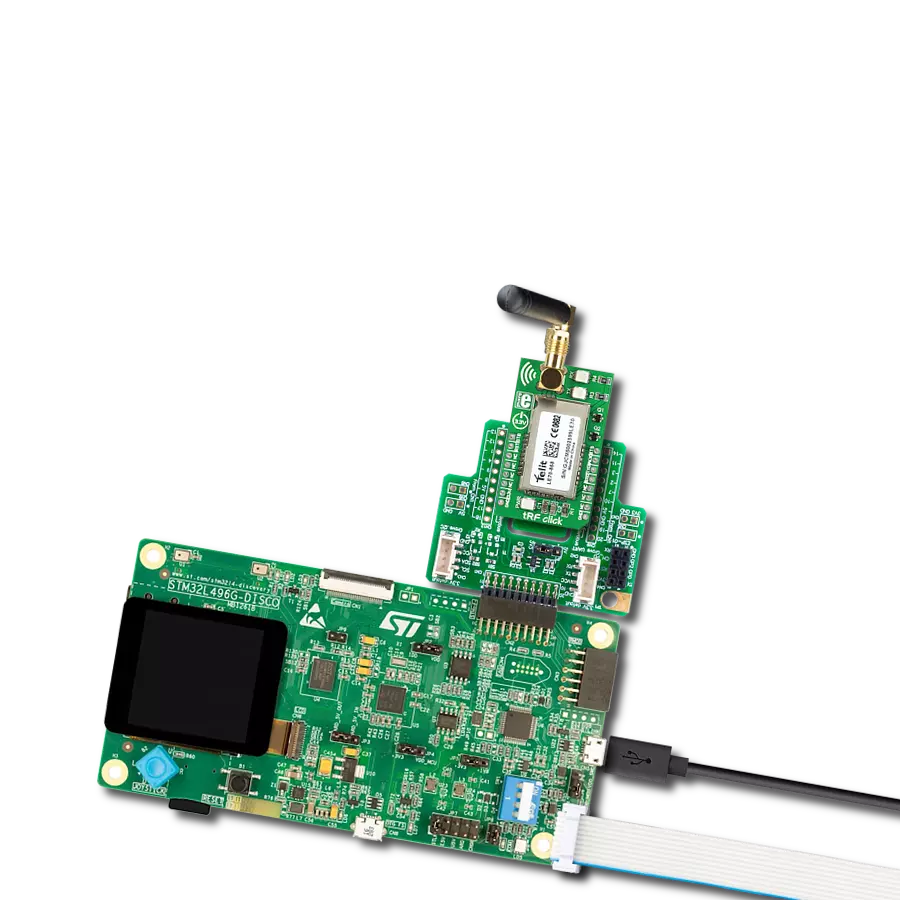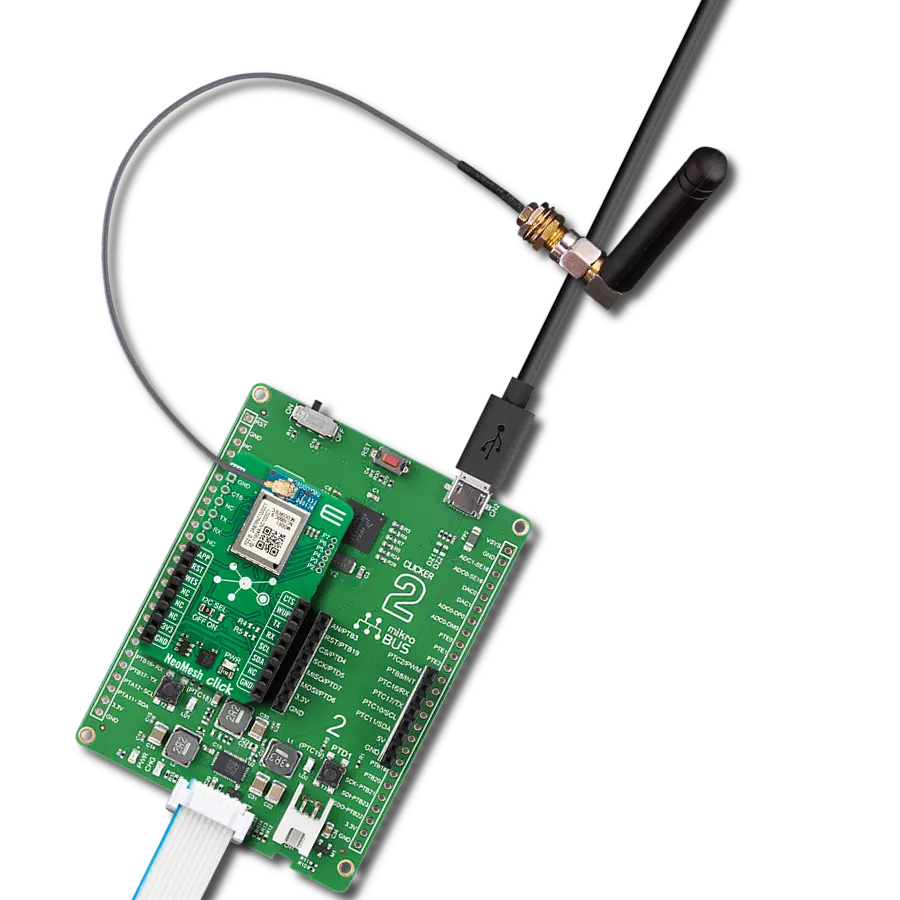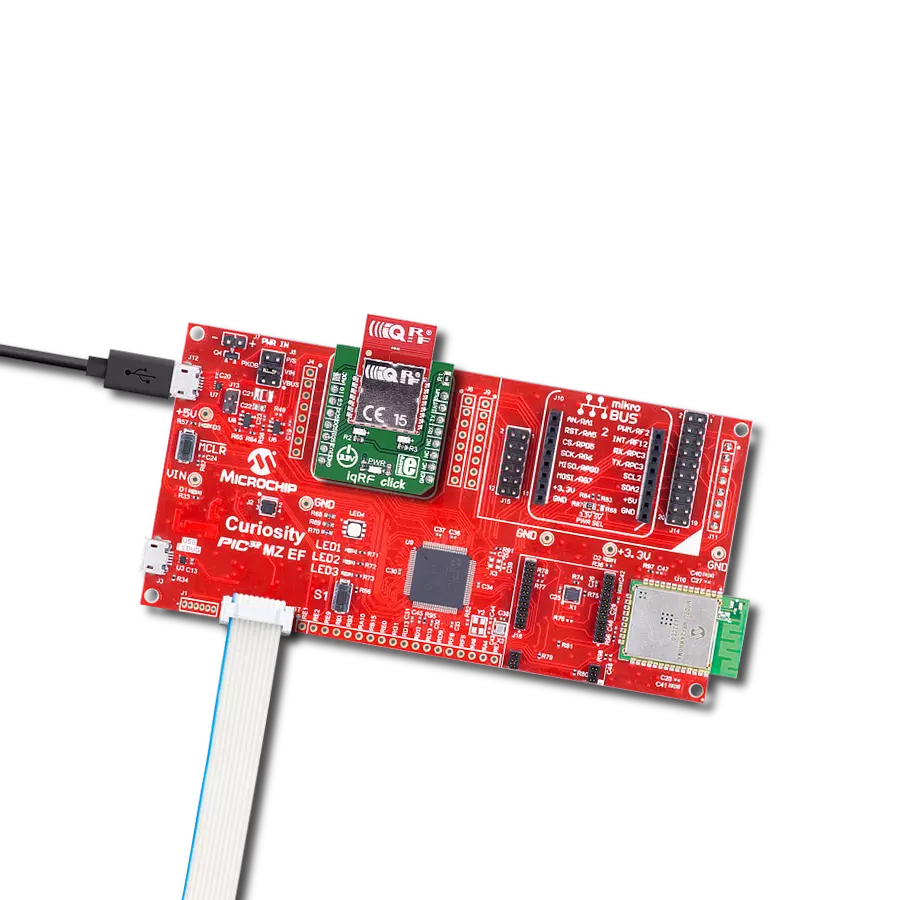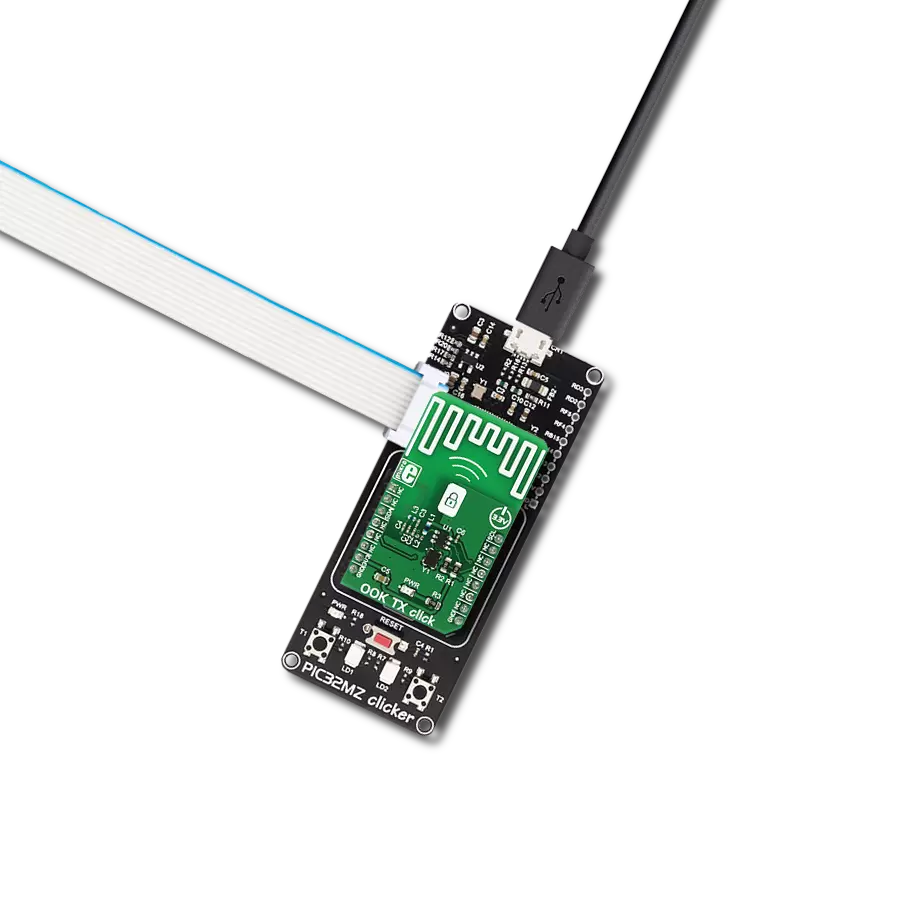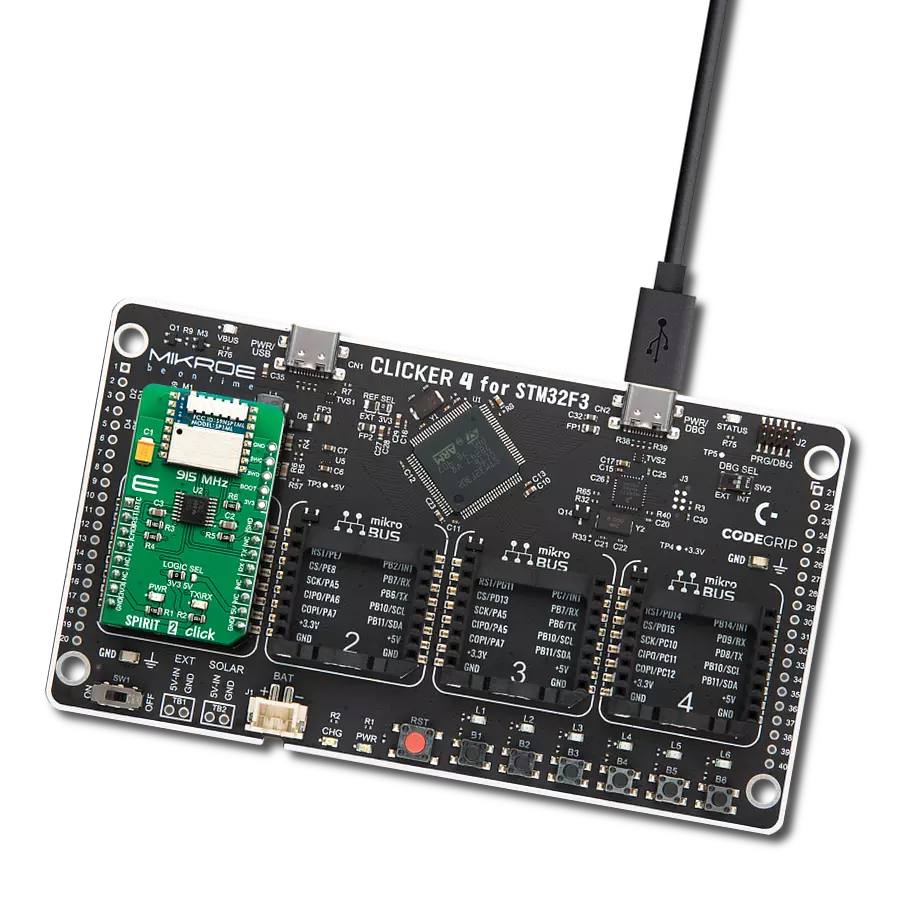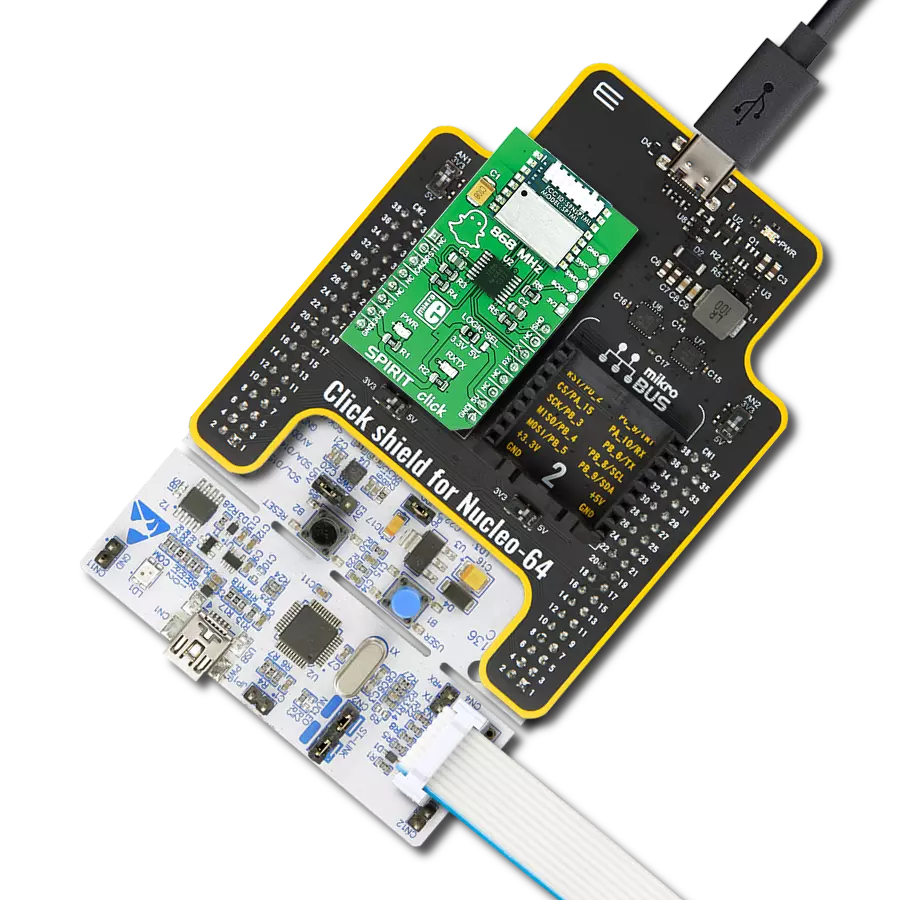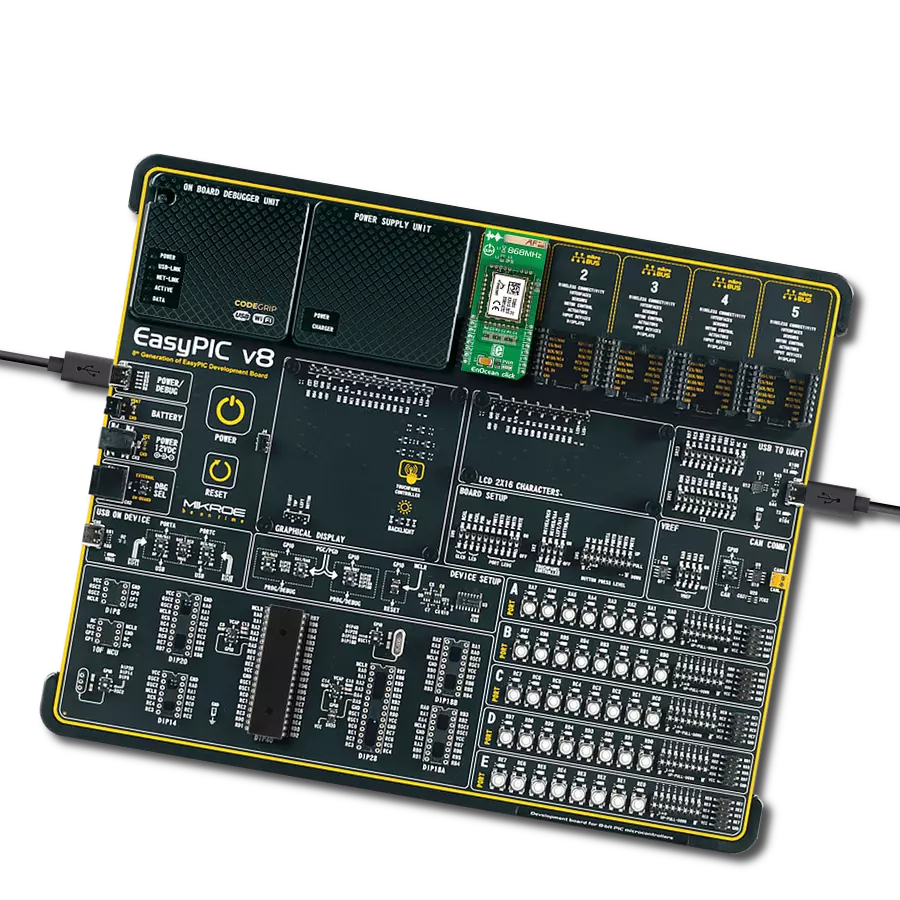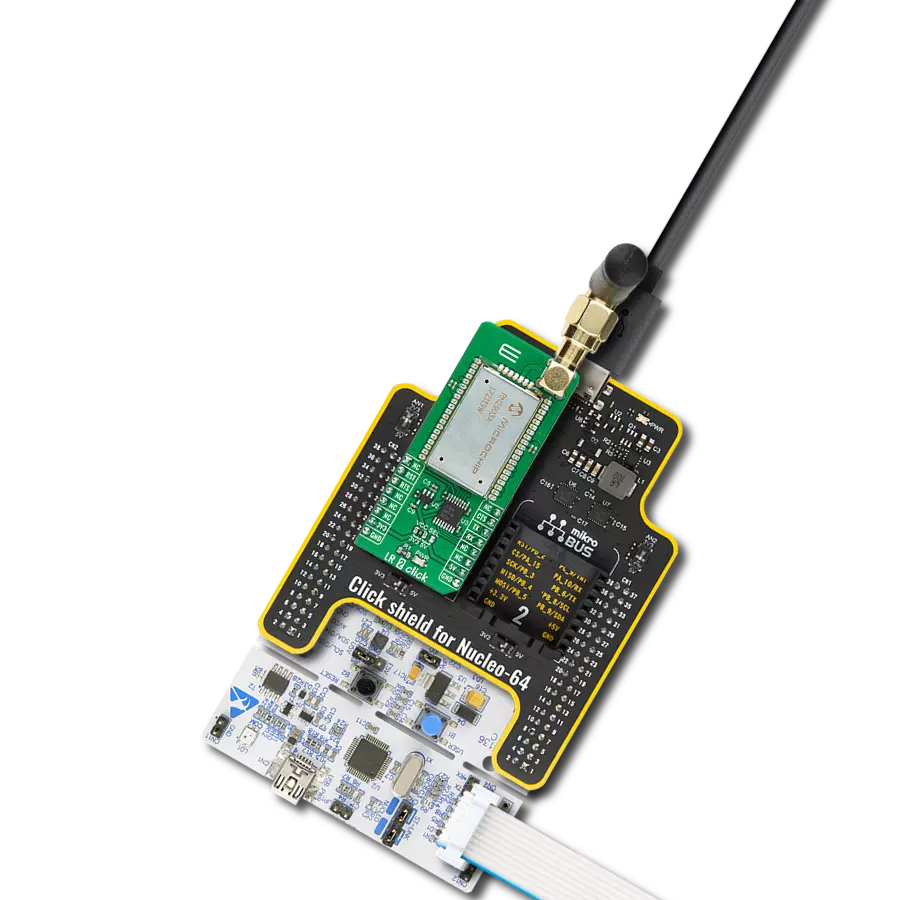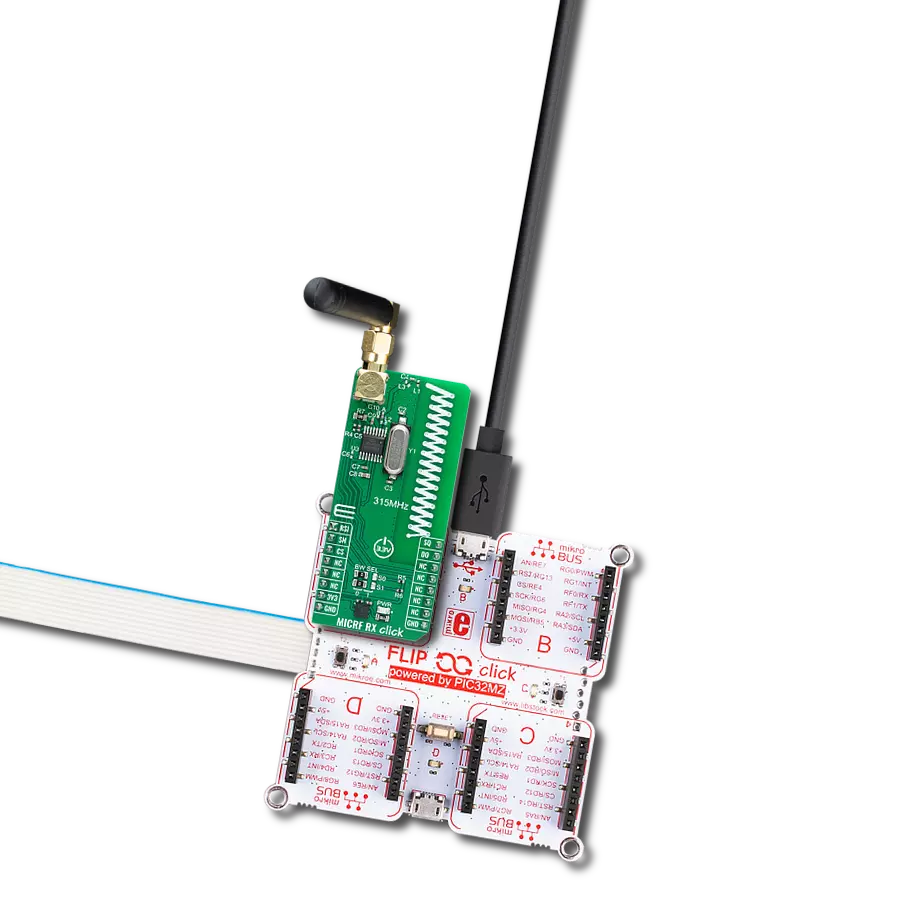Our ultra-low power transceiver gateway module is designed to seamlessly integrate EnOcean communication into your IoT ecosystem, enhancing connectivity and energy efficiency.
A
A
Hardware Overview
How does it work?
EnOcean 3 Click is based on the TCM515, a transceiver gateway module that operates at 868MHz radio band module from EnOcean. Its fully integrated radio capability enables communications with other devices by using onboard PCB antenna, so no additional antennas are needed for testing this device. The TCM 515 can work in three functional modes: Telegram Reception, Telegram Transmission, Low Power Sleep. In receive mode, TCM 515 processes received radio telegrams and verify correct frame structure and checksum. In transmit mode, TCM 515 receives radio-telegrams for transmission from the external host via its ESP3 interface. TCM515 can be set into a low power sleep mode for a defined period of time, after the expiry of the requested sleep period,
TCM 515 will automatically wake-up and transition back to receive mode. Each TMC515 module contains its own EnOcean Unique Radio ID (EURID) which can be used during transmission for data authentication. Besides this feature, it's also possible setting for each module Base ID or Broadcast ID depending on the application that you are designing. Another important feature is SLF (Security Level Format) which specifies the parameters of the encryption, authentication and rolling code algorithms used for communication with a specific device, which enables TCM515 to encrypt and decrypt telegrams using AES128 based on a 16-byte security key. The TCM 515 provides a transparent radio link between EnOcean radio devices and an external host connected via UART
interface using the standardized EnOcean Serial Protocol V3 (ESP3) communication protocol. The default interface speed for this module of the ESP3 (UART) interface is 57600. Additionally, it is possible to change the default ESP3 interface speed at power up from 57600 Bit per second to 460800 Bit per second by moving TURBO jumper to EN position. This Click Board™ is designed to be operated only with 3.3V logic level. A proper logic voltage level conversion should be performed before the Click board™ is used with MCUs with logic levels of 5V. It is ready to be used as soon as it is inserted into a mikroBUS™ socket of the development system.
Features overview
Development board
PIC32MZ Clicker is a compact starter development board that brings the flexibility of add-on Click boards™ to your favorite microcontroller, making it a perfect starter kit for implementing your ideas. It comes with an onboard 32-bit PIC32MZ microcontroller with FPU from Microchip, a USB connector, LED indicators, buttons, a mikroProg connector, and a header for interfacing with external electronics. Thanks to its compact design with clear and easy-recognizable silkscreen markings, it provides a fluid and immersive working experience, allowing access anywhere and under
any circumstances. Each part of the PIC32MZ Clicker development kit contains the components necessary for the most efficient operation of the same board. In addition to the possibility of choosing the PIC32MZ Clicker programming method, using USB HID mikroBootloader, or through an external mikroProg connector for PIC, dsPIC, or PIC32 programmer, the Clicker board also includes a clean and regulated power supply module for the development kit. The USB Micro-B connection can provide up to 500mA of current, which is more than enough to operate all onboard
and additional modules. All communication methods that mikroBUS™ itself supports are on this board, including the well-established mikroBUS™ socket, reset button, and several buttons and LED indicators. PIC32MZ Clicker is an integral part of the Mikroe ecosystem, allowing you to create a new application in minutes. Natively supported by Mikroe software tools, it covers many aspects of prototyping thanks to a considerable number of different Click boards™ (over a thousand boards), the number of which is growing every day.
Microcontroller Overview
MCU Card / MCU
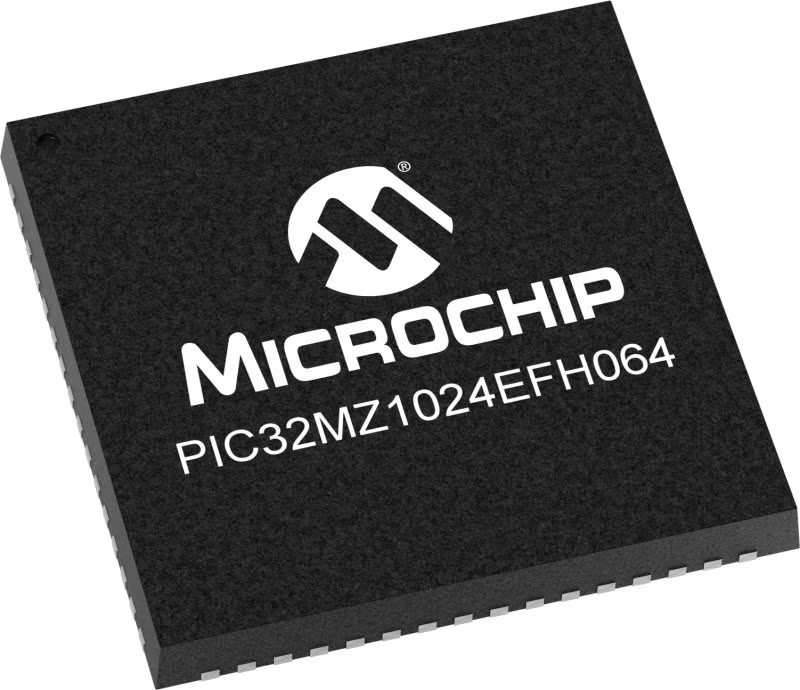
Architecture
PIC32
MCU Memory (KB)
1024
Silicon Vendor
Microchip
Pin count
64
RAM (Bytes)
524288
Used MCU Pins
mikroBUS™ mapper
Take a closer look
Click board™ Schematic

Step by step
Project assembly
Software Support
Library Description
This library contains API for EnOcean 3 Click driver.
Key functions:
enocean3_uart_isr- UART Interrupt Routine function.enocean3_response_handler_set- Handler Set function.enocean3_send_packet- Packet Send function.
Open Source
Code example
The complete application code and a ready-to-use project are available through the NECTO Studio Package Manager for direct installation in the NECTO Studio. The application code can also be found on the MIKROE GitHub account.
/*!
* \file
* \brief Enocean3 Click example
*
* # Description
* This example reads and processes data from EnOcean 3 Clicks.
*
* The demo application is composed of two sections :
*
* ## Application Init
* Initializes the driver and sets the driver handler.
*
* ## Application Task
* Reads the received data and parses it on the USB UART if the response buffer is ready.
*
* ## Additional Function
* - enocean3_process - The general process of collecting data the module sends.
* - make_response - Driver handler function which stores data in the response buffer.
* - log_response - Logs the module response on the USB UART.
* - log_example - Logs button events on the USB UART.
* - check_response - Checks if the response is ready and logs button events.
*
* \author MikroE Team
*
*/
// ------------------------------------------------------------------- INCLUDES
#include "board.h"
#include "log.h"
#include "enocean3.h"
#include "string.h"
// ------------------------------------------------------------------ VARIABLES
static enocean3_t enocean3;
static log_t logger;
enocean3_packet_t response;
uint16_t response_size_cnt;
uint8_t rsp_check;
// ------------------------------------------------------- ADDITIONAL FUNCTIONS
void make_response( enocean3_packet_t *rsp, uint16_t *rsp_length_size )
{
uint16_t rsp_cnt;
for ( rsp_cnt = 0; rsp_cnt < rsp->data_length; rsp_cnt++ )
{
response.data_buff[ rsp_cnt ] = rsp->data_buff[ rsp_cnt ];
}
response.data_length = rsp->data_length;
response.opt_length = rsp->opt_length;
response.packet_type = rsp->packet_type;
response_size_cnt = *rsp_length_size;
}
void log_response( )
{
uint16_t rsp_cnt;
if ( rsp_check == 1 )
{
log_printf( &logger, "OPCODE + PARAM : ", rsp_check );
rsp_check = 0;
}
for ( rsp_cnt = 0; rsp_cnt < response.data_length; rsp_cnt++ )
{
log_printf( &logger, "0x%.2X ", ( uint16_t ) response.data_buff[ rsp_cnt ] );
}
if ( response_size_cnt == 1 )
{
log_printf( &logger, "\r\n" );
rsp_check = 1;
}
}
void log_example( )
{
switch ( response.data_buff[ 1 ] )
{
case 0x00:
{
log_printf( &logger, "* Button is released *\r\n" );
break;
}
case 0x10 :
{
log_printf( &logger, "* Button 1 is pressed *\r\n" );
break;
}
case 0x30 :
{
log_printf( &logger, "* Button 3 is pressed *\r\n" );
break;
}
case 0x50 :
{
log_printf( &logger, "* Button 5 is pressed *\r\n" );
break;
}
case 0x70 :
{
log_printf( &logger, "* Button 7 is pressed *\r\n" );
break;
}
case 0x15 :
{
log_printf( &logger, "* Buttons 1 and 5 are pressed *\r\n" );
break;
}
case 0x17 :
{
log_printf( &logger, "* Buttons 1 and 7 are pressed *\r\n" );
break;
}
case 0x35 :
{
log_printf( &logger, "* Buttons 3 and 5 are pressed *\r\n" );
break;
}
case 0x37 :
{
log_printf( &logger, "* Buttons 3 and 7 are pressed *\r\n" );
break;
}
default :
{
break;
}
}
}
void check_response( )
{
uint8_t response_ready;
response_ready = enocean3_response_ready( &enocean3 );
if ( response_ready == ENOCEAN3_RESPONSE_READY )
{
log_example( );
}
}
// ------------------------------------------------------ APPLICATION FUNCTIONS
void application_init ( void )
{
log_cfg_t log_cfg;
enocean3_cfg_t cfg;
/**
* Logger initialization.
* Default baud rate: 115200
* Default log level: LOG_LEVEL_DEBUG
* @note If USB_UART_RX and USB_UART_TX
* are defined as HAL_PIN_NC, you will
* need to define them manually for log to work.
* See @b LOG_MAP_USB_UART macro definition for detailed explanation.
*/
LOG_MAP_USB_UART( log_cfg );
log_init( &logger, &log_cfg );
log_info( &logger, "---- Application Init ----" );
// Click initialization.
enocean3_cfg_setup( &cfg );
ENOCEAN3_MAP_MIKROBUS( cfg, MIKROBUS_1 );
enocean3_init( &enocean3, &cfg );
Delay_ms ( 500 );
enocean3_response_handler_set( &enocean3, &make_response );
rsp_check = 1;
}
void application_task ( void )
{
enocean3_uart_isr ( &enocean3 );
check_response ( );
Delay_1ms( );
}
int main ( void )
{
/* Do not remove this line or clock might not be set correctly. */
#ifdef PREINIT_SUPPORTED
preinit();
#endif
application_init( );
for ( ; ; )
{
application_task( );
}
return 0;
}
// ------------------------------------------------------------------------ END
Additional Support
Resources
Category:Sub-1 GHz Transceievers
